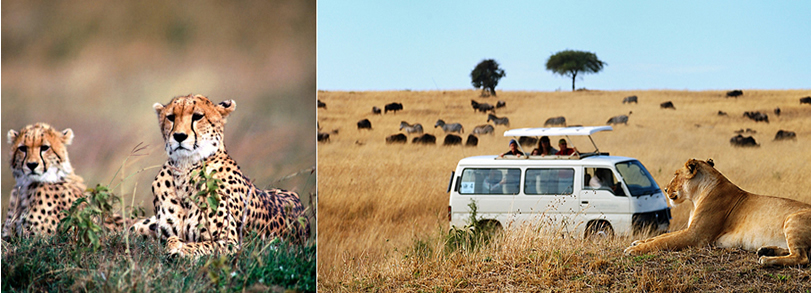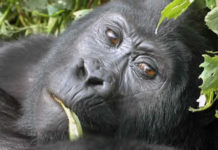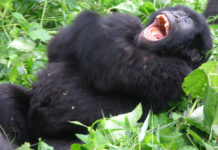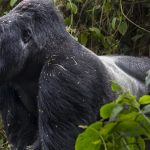As the eyes of the world continue to be drawn to Africa and Uganda in particular, the continent’s somber history begins to fade away as new memories of a rich cultural mix of the planet’s most welcoming people and nature’s finest cling into the minds of those that have stepped a moment away from their homes into Africa.
With numerous numbers of foreigners flocking the continent in such for life’s memorable experiences especially in what nature has at hand, there is still plenty to be discovered. Several have chosen to focus on the ‘Pearl of Africa’ to explore the continent in a nut shell but still time has not given them the best to traverse this small but high naturally endowed nation called Uganda.
Drawn majorly by enthusiastic and adventurous desires to come face to face with man’s evolutionary cousin and most critically endangered ape- the mountain gorilla which the country’s tourism industry has used for branding the nation, much more lie in the wild undiscovered.
At this Momentous epoch therefore, allow me with immense pleasure and profound honor to uncover the secrets, the treasure, the less visited and the undisturbed wilderness of this Pearl of Africa that one must visit before leaving the planet.
The less known, the highly secluded and the most adored true African wilderness-the Kidepo valley National park spans in the northeastern corner of Uganda in the remote sub region of Karamoja; a land whose inhabitants (Karimajong) have preserved their rich culture through the ages of civilization to the modern day. The park stretches to the South Sudan boarder as well as towards Kenya boarder in the east in a land that is largely plain with Morungule range raising high in the northern part of the park. The southern part is well drained by the Narus River that runs through the Narus valley adorned with numerous swamps that provide water for the enormous wildlife during draught seasons.
The park beds on an area about 1442 km2 and 700km from Uganda’s capital Kampala by road. The park can be accessed by road from Kampala or by an air craft from Entebbe direct into the park which takes less than an hour. By road, four possible routes can reach you to the park with the longest being the Kampala- Mbale- Soroti- Moroto- Kidepo that passes east of L. Kyoga and is a total distance of 792kms.the 2nd eastern route is 740kms, starts from Kampala- Sironko- Kotido- Kaabong – Kidepo. The western routes are shorter with one that begins from Kampala- Karuma – Lira – Kotido – Kidepo which is 705 kms. The shortest of all is the route from Kampala – Karuma – Gulu – Kitgum – Kidepo which is 571 kms.
Kidepo’s large expanse is dominated by open tree savannah with hills colonized by dry mountain forest as some water courses support acacia forests. Majority of the hill tops are topped by rock kopjes that provide resting places for the Klipspringers and gives panoramic views of the park.
The park is in a semi-arid area with just one rainy season per year (April- September) and rainfall is minimal. The park is mainly drained by two seasonal rivers-the Narus that flows in the Narus valley in the south which receives 890mm of rain annually and Kidepo River in the Kidepo valley in the north that receives only 635mm of rain annually. When these two dwindle and dry, animals converge in the Narus valley to drink from the numerous wetlands and remnant pools there.
It’s arguably because of these semi-arid conditions that have given Kidepo a special treatment in its wildlife diversity that boasts 28 endemic mammal species and a number of bird species that are not elsewhere in Uganda. Some of these are draught survivors that can go for months without water like the Grant’s gazelle.
The park shelters about 80 mammal species that includes the elephants, Africa’s largest single herd of buffalos, Rothschild’s giraffe, the Burchell’s Zebra, the bush pig, topi, Bohor reedbuck, Defassa waterbuck, the chandler’s mountain reedbuck, Uganda cob, Jackson’s Hartebeest, oribi and other numerous antelopes some of which are not in any other park in Uganda like the klipspringer, the grant’s gazelle, the Beisa Oryx and the lesser Kudu. The park also brags of localized carnivores not elsewhere in Uganda like the fastest land mammal- the cheetah, the caracal, bat eared fox, aard wolf and stripped hyena. Other carnivores also present are the spotted hyena, lions, Leopards, the black backed and side stripped jackal among others. Therefore this park is an ideal place to visit during a Uganda safari, and is totally worth visiting.
The park’s ever burgeoning bird population of about 463 species confirmed and 26 unconfirmed is only surpassed by Queen Elizabeth National park in the whole country. The highlights of these include the Ostrich (not elsewhere in Uganda), Kori bustard, secretary bird, carmine, little green and red-throated bee-eaters and Karamoja apalis. Out of the 56 birds of prey recorded, 14 are endemic to Kidepo and Karamoja region including Verreaux’s eagle, Egyptian Vulture and the Pygmy falco.
There are also 5 primate species recorded in this vast land most notably is the Kavirondo bush baby that is an endemic resident and not found anywhere else in Uganda. If you haven’t visited this splendid park where 28 species have located their solitary home in the whole country, then you haven’t listened to the sweet whispers of the wild in their unbothered habitat. Being the less visited park and the most undisturbed park in Uganda, you can be sure to view the best Uganda wildlife with less hustle as the wildlife spread out in the Narus valley. Endeavor to look out for Kidepo’s unique fauna that cannot be seen in any other National park in Uganda.
Below are some of those endemics of this undisturbed vast land, but since time and space are not sufficient enough, you will glimpse on a few as more awaits you in the wild where our professional safari guides will meticulously guide you through.
The Beisa Oryx (Oryx beisa Beisa)
Also known as East African Oryx, the ring horned antelope is divided into 2 subspecies. The common Beisa Oryx (Oryx beisa beisa ) found in steppe and semi-arid areas throughout the Horn of Africa, area north of R. Tana and Kidepo national park and the Fringe-eared Oryx (Oryx beisa callotis) that inhabits area south of Tana river, in Southern Kenya and parts of Tanzania. The East African Oryx stands about 1 meter tall at the shoulder and weighs about 79 kgs.
It has a grey coat with a white underside, separated from the grey by a stripe of black, with black stripes where the head joins the neck, along the nose, and from the eye to the mouth and on the forehead. The mane is small and chestnut-colored; the ringed horns are thin and straight. They are found on both sexes and measure about 75–80 cm (30–31 in) in length. East African Oryx live in semi desert and steppes, where they eat grasses, leaves, fruit and buds and are able to store water by raising their body temperatures to 46.5o C (116o F) which allows a normal flow of heat from the body to the environment without a loss of water avoiding perspiration.
They congregate in herds of five to 40 animals, often with females moving at the front and a large male guarding from the rear. Some older males are solitary and Radio tracking studies have shown them often accompanied for brief periods by females on heat. Breeding occurs all year around and gestation is 8.5- 10 months with normally 1 calf produced per birth which lies up for 2-6 weeks before joining the herd. Calves are weaned after 3.5 months. Females reach sexual maturity at 1.5- 2 years while males are ready at 5 years. Their lifespan is up to 18 years in the wild and are normally preyed upon by Lion, leopard, hyena, Cape hunting dog.
The lesser Kudu (Tragelaphus imberbis)
This forest antelope found in East Africa was first described by English zoologist Edward Blyth in 1869 and belongs to genus Tragelaphus and family Bovidae. The generic name, Tragelaphus, derives from Greek word Tragos, meaning a male goat, and elaphos, which means a deer; while the specific name imberbis comes from the Latin term meaning unbearded, referring to this kudu’s lack of mane. It is 110-140 cm in length from head to tail and males reach approximately 95–105 cm at the shoulder, while females reach 90–100 cm. Males weigh about 92–108 kg and females 56–70 kg. The females and juveniles have a reddish-brown coat, while the males become yellowish grey or darker after the age of two years. Horns are present only on males. The spiral horns are 50–70 cm (20–28 in) long, and have 2 to 2-and-a-half twists.
The lesser Kudu is smaller than its relative species- the greater kudu and has no mane unlike the greater kudu. Males are distinctively larger than females and possess horns unlike females. The lesser kudu is a pure browser feeding on foliage from bushes and trees, shoots, twigs and herbs and is active at night and during dawn before seeking shelter in the thickets after sunrise. The lesser kudu can go for months without water and survive on the dew from plant leaves. Calves are born throughout the year since there are no specific breeding seasons and gestation is 8 moths climaxed by a single calf per birth and weaning is after 6 months. Females and males reach sexual maturity after 15 months although males are not socially mature up to 4- 5 years.
The lifespan of a lesser kudu is up to 15 years in the wild and may go beyond in captivity. The lesser kudu is shy and wary, and when worried flees with the tail held up, revealing the white underside. Leaps of up to 2 meters have been recorded, though these are not common. The females are known to be gregarious while males are solitary and have no territorial behavior. The lesser kudu is resident to Ethiopia, Kenya, Somalia, Sudan, Tanzania and Uganda; while it is extinct in Djibouti. The total population of the lesser kudu has been estimated to be about 118,000, with a decreasing trend in populations. One-third of the populations survive in protected areas. The International Union for Conservation of Nature (IUCN) rates the lesser kudu as “Near Threatened”. It is preyed upon by Leopard, Cape hunting dog, and lion.
The striped hyena (hyaena hyaena)
Averaging a height of 65-80 cm at shoulder and 1 meter in length (head-tail), the stripped hyena is the smallest of the true hyenas and retains primitive characteristics lost in larger species. It is grey or pale brown in color with 5 – 6 dark colored, vertical stripes on its flanks. It has a mane on its neck and shoulders and a bushy tail. Also known by scientific name as hyaena hyaena, the Striped Hyena belongs to the Hyaenidae family along with the Aardwolf, Brown Hyena, and Spotted Hyena. The head is rounded and it has a black, pointed muzzle. Its ears are pointed and they are set high on its head and on each foot there are four toes with blunt, non-retractable claws. Its front legs are longer than their hind which gives their back an oblique appearance and they have powerful jaws with strong teeth. Striped Hyenas have excellent senses of vision, hearing and smell.
They are usually silent but will vocalize if excited or threatened. When they feel threatened they are able to erect their mane and the long hairs on their back to make themselves appear much larger(38%) than they are although some times make fringe-deaths when attacked. Striped Hyenas inhabit the open savannahs, grasslands, arid mountainous regions and scrub woodlands of west, north and east Africa and west to south Asia. They are mainly solitary but sometimes may form small family groups. They are active at night and they spend their days sleeping in a burrow or cave. They mainly feed on carrion complemented with fruits though they can also kill their own prey such as insects, rodents, birds, lizards and rabbits.
They breed at any time of the year with a gestation period of 88-92 days producing 1-5 cabs in a den which are weaned after 4 months. The cubs open their eyes after 5-9 days from birth and at 30 days, they begin to feed on solid food. They reach their sexual maturity at 2-3 years of age and their total life expectancy is estimated at 10-12 years in the wild and 20-25 years in captivity. The major predators are humans who hunt them for killing their livestock. The striped hyenas are classified as near threatened by the IUCN and their global population is estimated at 10,000 mature individuals.
The Klipspringer
Klipspringers are stocky antelopes with a short neck and body, and large hindquarters, which help them, jump from rock to rock. They obtained their name from Afrikaans’ language which literally means ‘rock jumper’. Their ears are rounded and large, and their tails are small and basic. Their hoof structure is unique with the last joints of the digits rotated which enables them to walk on the tips of their hooves. Walking wears down the hooves giving them a cylindrical shape, which is suitable for a lifestyle on the rocks. Klipspringers secrete pheromones from their pre-orbital glands, which are narrow black slits found in the corner of their eyes. The scent glands are more developed in males than females.
They belong to family Bovidae and genus Oreotragus. Unlike most antelopes, females are slightly bigger than males with average weights of 13.2 kgs for females and 10.6kgs for males. The females are slightly longer than males with an average height of 90.5cm compared to the 86.2 for males. The total height of a klipspringer is between 75-115cm from head to tail and weighs between8-18 kgs. Like other African antelopes, their hairs are hollow with a springy texture and vary between 15-28 mm in length. Their hair helps in the reflection of radiant heat, provides insulation from thermal extremes, reduces moisture loss, and protects them from injuries which is an adaptation to their habitat. Klipspringers are solitary, and live in monogamous pairs, or as a family group with a male, female, and their offspring. The pairs mate for life and will spend most of their lives in close proximity to each other.
When one klipspringer is eating, the other will assume lookout duty, helping to keep the pair aware of any predators. Their gestation period is 6 months and gives birth to single young ones in an interval of 16 months. Their breeding seasons normally occur between August and September but may vary according to the conditions of their habitat. Klipspringers are herbivores, eating plants (fruits, leaves and flowers) growing in mountainous habitats and rocky terrain. They never need to drink, since the succulents they consume provide them with enough water to survive. They normally rest on rock kopjes which they blend with though this exposes them to predation by humans and sometimes martial eagles. The klipspringers occupy rocky habitat including rocky hills or outcrops, kopjes, and gorges with rocky sides. They can be found on rocky mountains as high as 4000 meters tall and other open habitats.
Klipspringers are active both during the day and the night, but are considered most active early in the morning and late in the afternoon. Throughout the remainder of the day, they tend to hide in the shade to avoid the heat. When temperatures are cool, klipspringers will remain active throughout the day. When faced with danger, the klipspringer will emit aloud alarm that alerts the rest which in turn will run towards a higher ground where they can visibly see their predator. They largely survive on their speed since they can out run most of their predators. Klipspringers are preyed upon mostly by leopards, caracals, spotted hyenas, martial eagles and wild cats among others. They are considered by IUCN as least concern since their numbers are still numerous estimated to be more than 40,000 globally.
Although there are no recorded lifespan for them in the wild, they are believed to live up to 17 years in captivity. More awaits you in Kidepo National park, come and we shall take you to these and more like the bat-eared fox, the aard wolf, the caracal, cheetah, and grant’s gazelle as you find out why they can’t survive in other parks of Uganda and as well view the other common animals like buffalos, elephants, giraffe among others during the captivating game drives with our excellent safari guides.
Inquire now at Africa Adventure Safaris and we shall take you through the best of this Pearl of Africa as you come closer to the secrets of nature, interact with your evolutionary cousins, be stunned with fascinating geography and delve into the sweet melodies of a true African wilderness.












